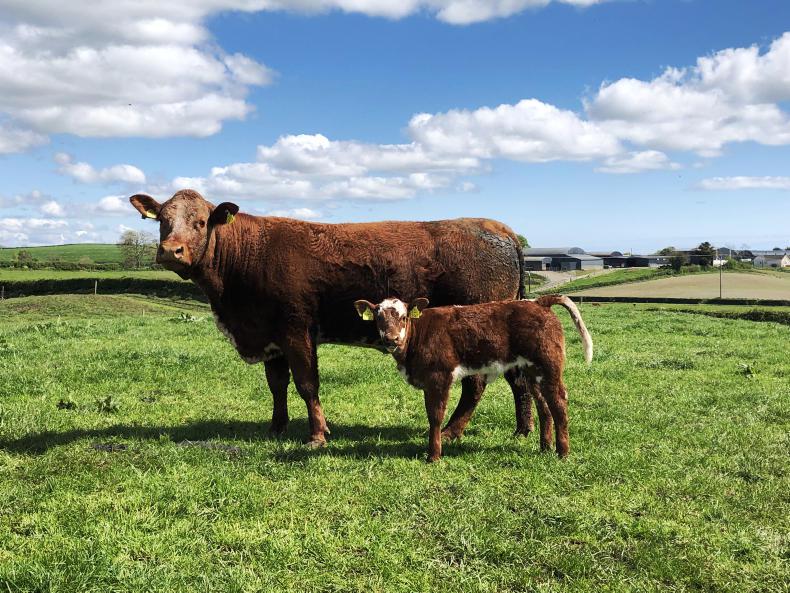Suckler herds participating in the Beef Data and Genomics Programme (BDGP) are experiencing higher rates of genetic gain than non-BDGP herds, according to the latest figures.
Analysis of herd data from the last five years by the Irish Cattle Breeding Federation (ICBF) has given an early picture of the effects the BDGP has on the national herd, since it was launched in 2015.
Across six key performance indicators (KPIs) - cow replacement index, first-calver replacement index, average calving interval, calves per cow per year, heifers calved between 22 and 26 months and six-week calving rate - BDGP herds have an equal or higher rate of genetic gain in all but one (Figure 1).
Gains
The ICBF expects further gains to be made in calving interval and calves per cow per year as replacement heifers bred since the beginning of the programme begin to enter the national herd.
Herd size was an area where reports tracking herd progress over five years showed a significant difference.
BDGP herds had an average of 26 cows in 2018, an increase of two since 2014. Non-BDGP herds decreased over the same period with the average herd falling by one to 16 cows (Table 1).
Read more
BDGP scheme under fire at Beef Summit
Not time to ‘slash and burn’ BDGP – Creed
Suckler herds participating in the Beef Data and Genomics Programme (BDGP) are experiencing higher rates of genetic gain than non-BDGP herds, according to the latest figures.
Analysis of herd data from the last five years by the Irish Cattle Breeding Federation (ICBF) has given an early picture of the effects the BDGP has on the national herd, since it was launched in 2015.
Across six key performance indicators (KPIs) - cow replacement index, first-calver replacement index, average calving interval, calves per cow per year, heifers calved between 22 and 26 months and six-week calving rate - BDGP herds have an equal or higher rate of genetic gain in all but one (Figure 1).
Gains
The ICBF expects further gains to be made in calving interval and calves per cow per year as replacement heifers bred since the beginning of the programme begin to enter the national herd.
Herd size was an area where reports tracking herd progress over five years showed a significant difference.
BDGP herds had an average of 26 cows in 2018, an increase of two since 2014. Non-BDGP herds decreased over the same period with the average herd falling by one to 16 cows (Table 1).
Read more
BDGP scheme under fire at Beef Summit
Not time to ‘slash and burn’ BDGP – Creed






 This is a subscriber-only article
This is a subscriber-only article











SHARING OPTIONS: